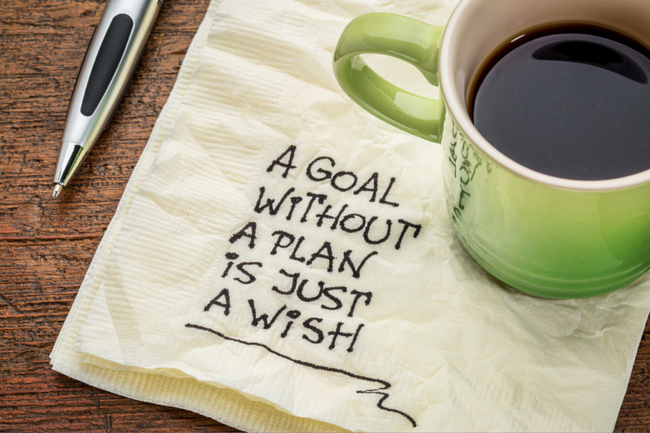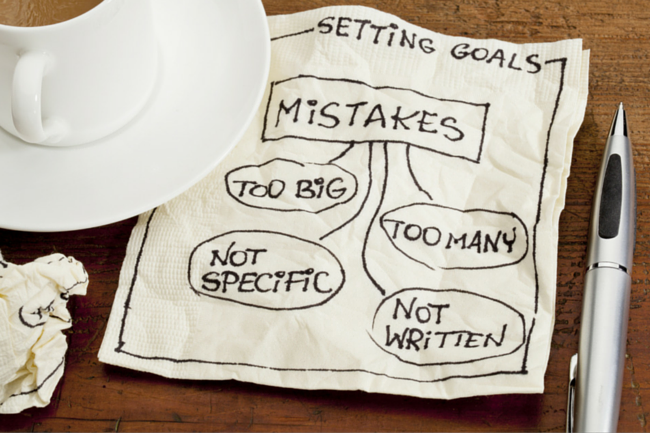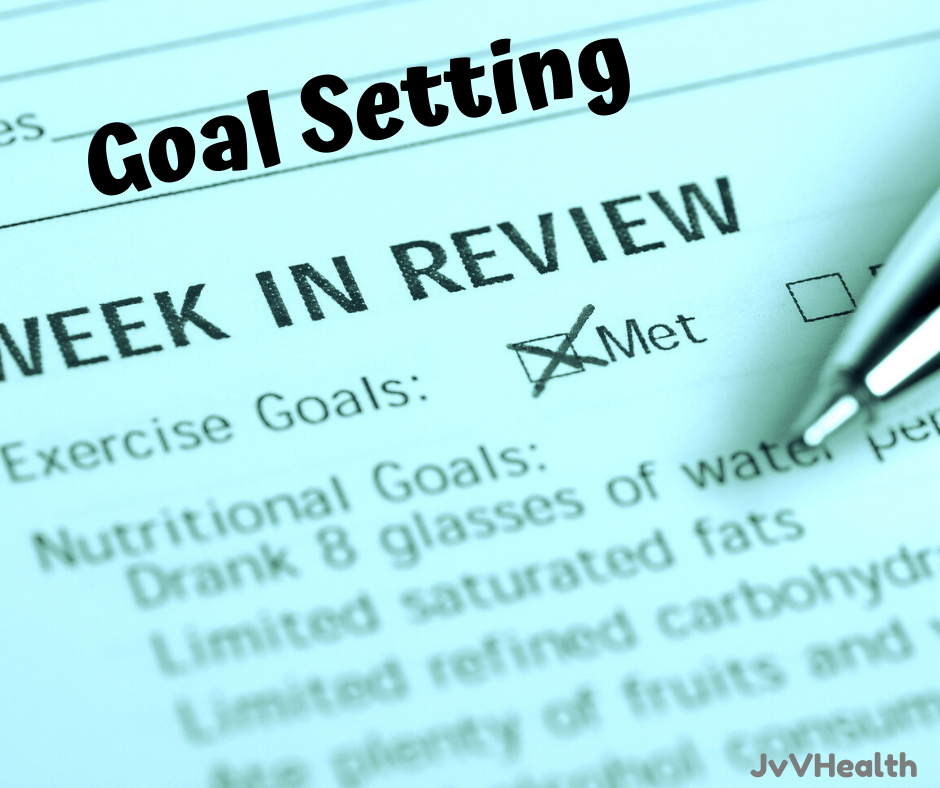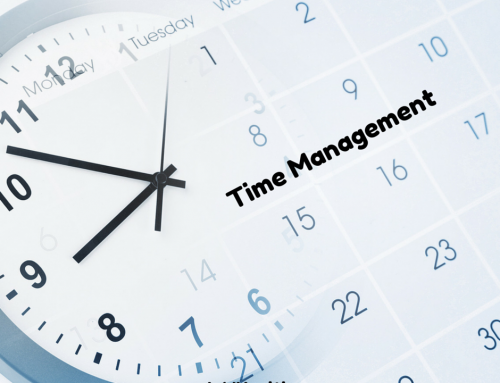Goal Setting Made Easy.
Step out and live BIG, – if not, those dreams are simply wishes!
Why Set Goals?
Goals will help you:
“People with clear, written goals, accomplish far more in a shorter period of time than people without them could ever imagine.”
➢ Brian Tracy

Goal Setting.
Most everyone has at least one goal that is at the top of their list. Oftentimes, though, goals are more like distant wishes: – thoughts of ’maybe’ or ‘someday’, or ‘if only things were different, then’. . . Sound familiar?
Let’s discuss a “what if” scenario. What if you had a chance to reach your goals and realize them?
What is it that you ultimately want to achieve? Consider all the goals you may have related to your health, fitness and wellbeing. What lifestyle, career, relationship or spiritual goals have you contemplated? How will those goals get you where you want to go? What will your life look like when you achieve all your goals? Now is your opportunity to dig deep, and focus on what really matters to you. Only when you know what you want, can you set goals and then map your plans to reach them.
Writing your goals down on a piece of paper is a powerful way to set an intention and begin the process of formulating your plan. Studies show, that when goals are written down, you have a much higher chance of reaching them. But, there is more to it than just writing them down. Over the years, I have garnered a lot of knowledge about goal setting. I have happily implemented much of what I have learned in my own live and I have shared what I learned with my clients.
Taking the time to go through this now, may make the difference in what you will achieve implementing healthy habits and in life in general. Before taking pen to paper to write down your goals, let’s get clear on what it is you are striving for so that you set meaningful goals. What is it that you want to achieve? What are your intentions? Where is it that you want to be?
The best place to start is to identify your end result (or destination). What is at the end of your “yellow brick road?” For example, you may say that your goal is to be healthy. Consider that until you define what “healthy” means for you. For now this is quite a generalized goal. Here is a way to sort it out. Think of how you want to feel when you reach the end of your “yellow brick road.” What does healthy mean to you?
Does it mean:
Going through this process identifies what healthy means to you. Being healthy is the destination. You also want to know your why – why do you want to be healthy? What areas of your health are out of balance? Finally, where are you starting from? Where do you want to end up? Once you are clear on these things, you can set your goals to move toward your destination.
The more closely you can narrow down your goals and pinpoint what you really want, the easier it is to formulate a plan.
Starting out on a long trip without a GPS, a map, a plan, or not knowing a destination, who knows where you may end up. Clarity is the key! With clairty , you, will find you have more ease and motivation, to keep yourself on track. There will be less chance for derailment when working toward your goals. Did you ever hear the saying
“if you do not know where you are going, you will never know when you get there .”
Having clear goals is like knowing how you will get to your destination.
Setting Priorities.
The first, most important thing is to look at your priorities! – The things that your life is made up of, that are important to you, and to which you are committed. This is the one step that is often overlooked when going through a goal setting exercise. Being clear on your priorities will be like your personal GPS to keep you on the right path. When a difficult decision presents itself, recognizing and choosing your best options will be easier when you are clear on your values and priorities.
Let’s look at your current priorities and you may be able to see something that needs to shift or change to help you reach your goals.

TIP: Use a blank sheet of paper and list all your priorities you can think about. Then choose your top 5 and use them for the next exercise.
Identify Your Top 5 Priorities.
Another word for priorities is values. Here are some value categories to get you thinking – you and your self care, family, friends, health, fitness, spirituality, sports, education, finances, career, adventure, travel, security. These are just a few suggestions, so write whatever yours are. While you do not have to stop at five, do realize that if you have too long of a list you may end up with competing, and unmanageable priorities.
Where are YOU on the list?
You deserve abundant health and happiness! You deserve to feel energetic and amazing! For this to happen, it means putting yourself high on your list, if you are not already there. If you are too busy taking care of everyone else, how will you find the time to take care of YOU? If you do not take care of yourself now, who is going to take care of your loved ones later? When you are taking care of yourself, everything seems easier and you feel so much better.
Who do you need help or support from in order to put yourself near the top? For example: if your priority is fitness, and you plan to exercise in the morning, who do you need support from, where can you find it: your spouse, your children, a buddy? How can you make this happen?
Do not skip this step of figuring out your priorities, because it is so important. If your priorities are not in line with your goals, it will be a struggle to reach them. It will also create more stress in your life. We do not need that!
Honoring Priorities Makes Decisions Easier.
Let’s build a hypothetical situation. Say you are in the market for a new job and your top three priorities are family, improving your health and fitness. If you are offered a job that requires a lot of travel, that job may not fit in with your top goals if your top priorities include family, fitness and improving your health.
Consider that extensive business travel would mean you would not be home much with your family, finding time for fitness could be much more challenging and all this could take a toll on your health.
If, on the other hand, you are offered a job where you can work from home more, never have to travel and still make good money doing something you enjoy, this job offer would be a better fit based on your priorities.
However, for someone who is single and lists things like adventure, travel and career as their top three priorities, the job offer that requires a lot of travel may be a great fit. Whereas they might feel stagnant working from home.
Conscious choices depend on priorities and life’s circumstances. When your priorities are in line with your goals, you will be able to formulate a clearer path and reach them sooner.
SMART.
Be SMART About Your Goals.
Putting your goals in writing is the first step in creating a plan you can stick with and help you stay motivated. Keeping your goals in a place where you can see them often, is a key to motivation: a note on your bathroom mirror, office desk, or on your smart phone are handy places. Setting your goals using the SMART method results in goals that become the basis for your personal road map to success.

Dream Big.
Passion fuels the rocket, but vision – a big dream points the rocket to its ultimate destination. Dream Big!
➢ Steve Jobs
Long Term and Short Term Goal Setting.
Start brainstorming your goals. Write down your goals as if anything were possible! Ask yourself questions: What do you want for your life? What do you want your life, your relationships, your health, your finances, your career to look like in one, three, or six months.
You will want to set both long-term goals and short-term goals or milestones. For example, you want to achieve a healthy weight, and you know that your ideal weight is between 135-140 pounds (this is your “destination”), and you are afraid of being at risk for diabetes. In addition your daughter’s wedding is in six months, and you want to feel and look good for it (this is your WHY). The last time you weighed yourself you were 210 pounds (where you are at). With this scenario, you would have two goals:
Setting a goal to lose 70 pounds in six months is unrealistic, if you want to achieve it in a healthy way.
Do not worry about knowing the exact HOW right now; just write them down. You can figure out the how a little later.

Be Specific.
When you are figuring out your SMART goals, be as specific as possible. This will give you a clear mental picture of your goals. The more laser-focused you can get, the better.
I will share an example of setting a financial goal. Instead of having a goal of saving money each month, get very specific. What dollar amount do you want to save each month? How can you make that happen? Determine your why and determine if it is attached to one of your priorities. When you can identify your why, you know the point from which you are starting.
The example is as follows: “I will save some money for our family vacation to Hawaii next year to create a great family memory on the island, a place we have longed to visit. Since I will need $7,200 and I just started to save, I will save $600 each month and put it into a savings account specific for this vacation. I will take $300 from each of my two paychecks each month. This goal ties into the priorities of family as well as fun and adventure.”
The goal in this example is Specific, Measurable, Attainable, Realistic and Time-bound. It is also in alignment with the priorities.
Putting all the Pieces Together.
Take some time to work backwards on this. By working backwards from the due date to today, you can figure out what needs to be done by when. This gives you a concrete timeline from which to work and live by. Grab a pen and some paper for this or your laptop/tablet. Start brainstorming and create your plan.
Example: If your goal is to earn $5,000 per month within 6 months, what do you need to start putting into place NOW? If your goal is to lose 30 pounds in 6 months, what does your plan consist of? What plan can you create for yourself?
Writing down your goals is important, but even more important is to remember to refer to them often. This helps you stay focused and on track. It also allows you to update and adjust your plan of action as needed. Feel free to list any other BIG goals you have for your life. Do not limit yourself omitting from the list, those items that seem impossible. Just write them down. What if anything were possible? What would you set for your goals?
Having an initial time frame for when you would like to accomplish your goals will drive you towards reaching them sooner. Adjust tasks and due dates as needed. We all work smarter when we have a deadline.
Figuring Out Your WHY.
Why do you want to reach your goals? What would that really mean to you and what would that feel like? If you do not have an emotional attachment to your goals, they are not usually as meaningful or motivating. What is going to get you moving on those days you really do not feel like it?
Maybe you want to fit into a dress for a special event, and you need to lose 20 pounds to get there. WHY is that important? Truth is, it is probably not about the dress. It is most likely about how you will feel; more confident, perhaps. Your WHY is usually layers underneath your initial answer.
Your WHY is what will help you stay committed when achieving your goal seems hard or challenging.
Here is an example of questions you can ask yourself to get to the WHY:
(Yes, I know there are a few “because” statements in there but that is the most important part in getting to your WHY).
TIP: Do this WHY exercise for each goal so that it becomes a driving force for you rather than just a wish.
Finally go back over your list of priorities, your WHY and your SMART goals and be sure your goals are in sync with what you really want for your life. How do you really want to spend your time? What makes you happiest? Are your goals in line with that? If yes, that is great – you are on your way. If they are not, just take some time to reevaluate what is most important to you at this time in your life and adjust your goals and your plan accordingly.
Once your goals are in line with your priorities, you have a solid plan in place, and deep down inside you know what you want, you become unstoppable! Be sure to keep your goals in front of you wherever you can, as this will guide you in the direction you want to go – GOOD LUCK!











Leave A Comment